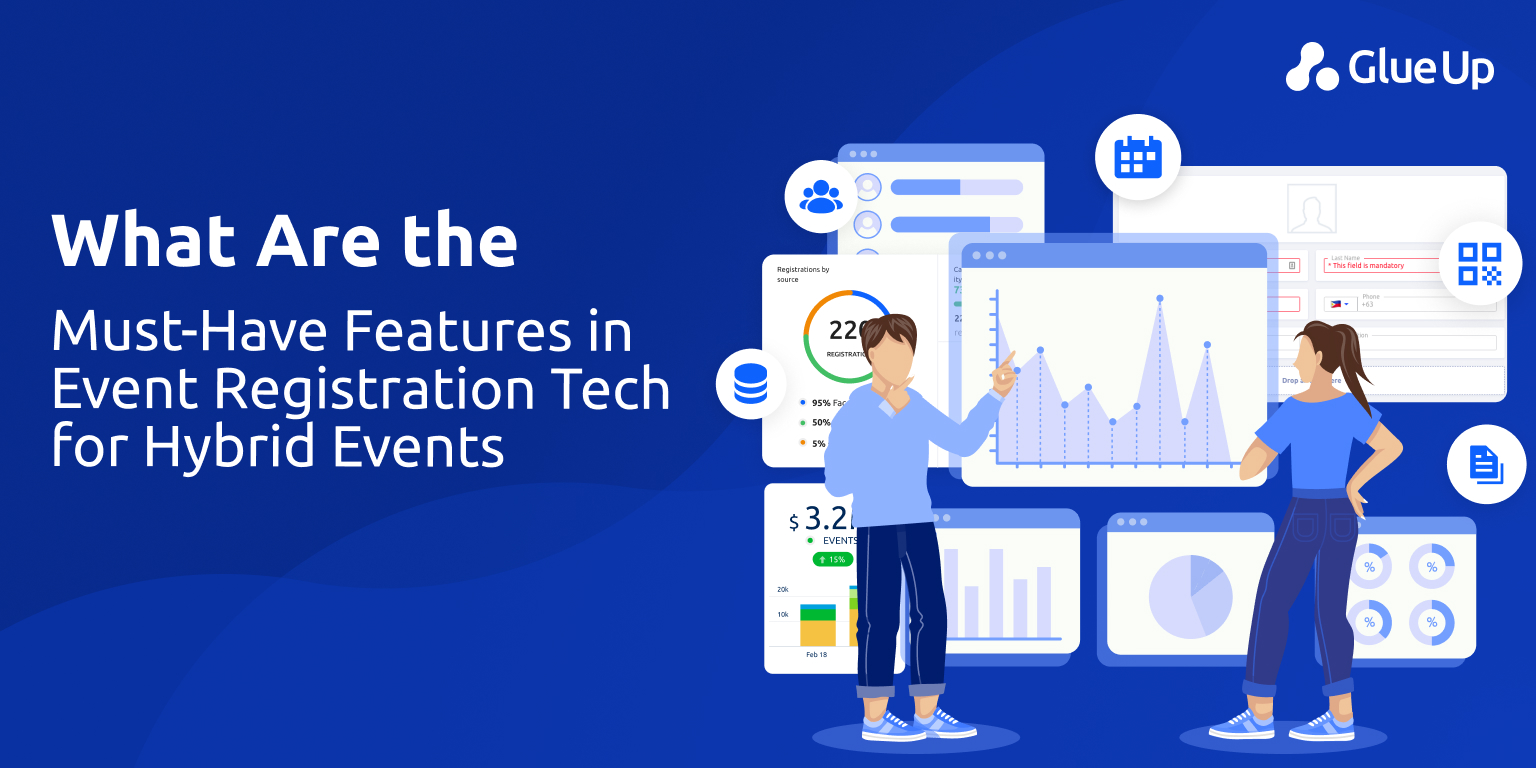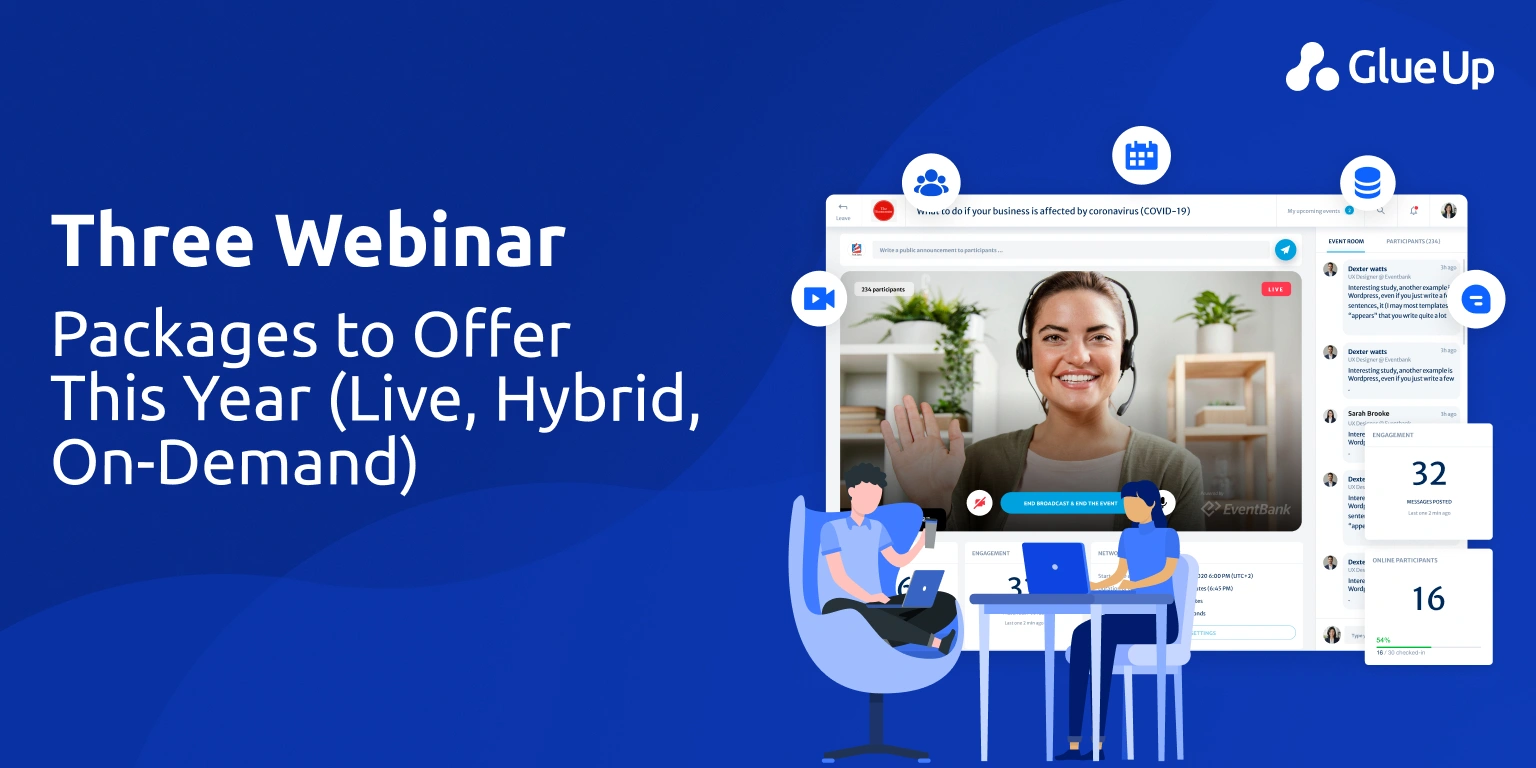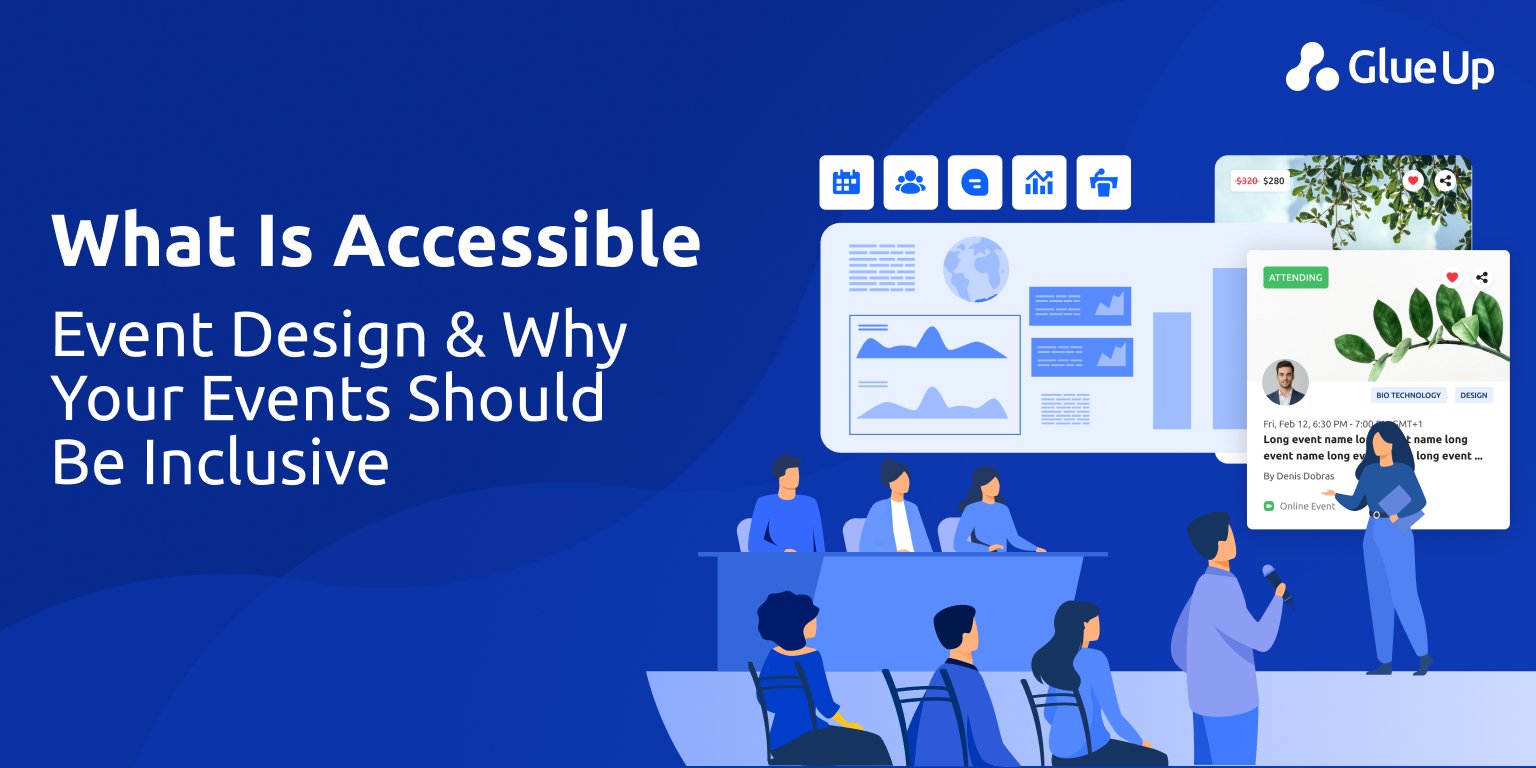
Your board wants certainty. Your sponsors want proof. Your members want access. That is the conversation that will define your next budget cycle. And at the heart of it lies hybrid event management software, not simply a choice of tool, but the difference between running an event and building an engine of value.
When you hear the phrase hybrid event management software, think of one system: one registration flow, one agenda, one engagement layer, one analytics dashboard; serving two simultaneous audiences: the people in the room, and the people tuning in remotely. If you still think hybrid means “we’ll stream the keynote and hope for the best,” you are one board report away from hearing “why did we spend this much and what did we really get?”
To associations, chambers, and membership-based organizations, hybrid event management software isn’t a gimmick. It’s the infrastructure that lets you deliver on your promise: access, connection, professional development, and value. It turns your one-time conference into a layer of business continuity, member engagement, sponsor ROI, and measurable impact.
And yes, mixing on-site logistics with streaming, engagement, registration, payments, and post-event content is complex. But the right hybrid event management software makes it manageable, and defendable.
Key Takeaways
Hybrid event management software is now infrastructure. Associations and chambers that treat it as a streaming feature miss the point. It’s the system that unifies registration, streaming, engagement, payments, and analytics into one defensible, board-ready framework.
Boards care about stability, reach, and proof. Hybrid events safeguard value when travel, budgets, or attendance fluctuate. They expand access, create inclusive participation, and provide measurable ROI across sponsors, members, and advocacy outcomes.
The right platform connects data across your entire ecosystem. True hybrid event management software links event data to membership CRM, finance, community, and post-event content, so every click, scan, and chat ties back to retention and revenue.
Remote attendees deserve equal participation. Engagement tools like shared Q&A, live chat, polls, mobile apps, and networking lounges turn passive viewers into active contributors, improving satisfaction and sponsor visibility.
ROI is the new north star. If you can’t prove what your events generated in revenue, engagement, satisfaction, and pipeline, the spend becomes indefensible. Hybrid event management software gives you that proof in one report.
Quick Reads
Hybrid Event Management Software Is Now Your Stability Strategy
Let’s start with the big picture: Your organization is no longer primarily judged on how many people showed up at the ballroom. You are judged on how many people you reached, how many you engaged, how many renewed, and how many you made feel connected. If one pandemic, travel strike, or budget freeze derails your annual meeting, the board remembers. The sponsors notice. The members resent it.
Hybrid event management software is your stability strategy. You’re not just planning for a big conference. You’re planning for a world where travel is optional, budgets can vanish, and member expectations include “just in time” access. Hybrid event management software allows you to say: “Whether you’re onsite or remote, you count, and we’ll track your engagement, your value, your outcome.”
This isn’t about streaming for streaming’s sake. It’s about continuity of value. A hybrid event still uses a venue, but the physical space becomes one lens rather than the only lens. The remote audience becomes first class, not afterthought. This matters for associations because you serve people who may not fly every year, who may have caregiving responsibilities, mobility challenges, or budget restraints. Hybrid event management software ensures they do not remain invisible.
The value also extends to sponsorship and risk. When you contract a big meeting with sponsors, you promise exposure. If you can’t guarantee attendance, your credibility takes a hit. With hybrid event management software, sponsors receive data: registration numbers, virtual booth visits, live chat interactions, session watch-times, post-event replay views. That data keeps your sponsors coming back.
And from the risk perspective: Nature, logistics, travel, labor shortages, they all threaten in-person events. Hybrid event management software gives you a fallback plan that is baked into your program. The event still goes. You still deliver value. You still build momentum.
That’s why the right hybrid event management software is no longer optional. It is your strategic infrastructure.
Why Hybrid Matters to Your Board
Now let’s talk candidly about your board, and how they view your event spend. Most board members are not thinking “what color should we paint the signage?” They’re thinking: “Is this expenditure going to deliver outcomes we can report? Will we justify it in the next renewal cycle? Will we retain sponsors and members? Will we survive if something goes wrong?”
Hybrid event management software is relevant because it addresses four key fiduciary concerns of boards of member-based organizations.
Reach and Inclusion
Your members are global, or at least they are geographically, financially, and logistically diverse. By offering remote participation, you expand access dramatically. You make good on the value proposition of membership. Studies show hybrid formats allow greater participation from people who otherwise would not travel.
Accessibility features like captioning, live Q&A for remote participants, recorded sessions for later access, and mobile-friendly content become evidence you see all your members. Research on inclusion in hybrid events emphasizes planning for different access needs.
Sponsorship Revenue and Renewals
Sponsors want results. They don’t simply want logo placement. They want leads, engagement metrics, conversion. Hybrid event management software allows you to deliver on those metrics, both in-room and virtual. When you can show your sponsor: “Here are 1,200 virtual booth scans, 75 live chats, 340 session watchers from 18 countries,” you give them a reason to renew. Without that, you ask for the same dollar ask and offer weaker proof.
Content Lifespan and Member Value
Your event is not just a one-day or two-day moment. It becomes content you repurpose. Hybrid event management software treats your sessions as assets: they are recorded, indexed, gated, accessible later, tied to continuing education credits, or used in member-only libraries. That dramatically extends your value proposition, especially for members who couldn’t attend live. Making this part of your program means your event spends are not “one and done.” They ripple.
Risk Protection and Operational Resilience
A one hundred percent in-person event is a bet. What if inflation spikes, travel is cut, bad weather hits, public sentiment turns? With hybrid event management software, you minimize that bet. You give your organization options. You give your board peace of mind. That alone is a strategic win.
When you pull this together: reach + sponsorship + content + risk; you are speaking your board’s language. Hybrid event management software is what lets you convert that language into actionable numbers.
And this is where platforms like Glue Up matter. Glue Up is the ecosystem that links registration, engagement, community, payments, mobile app, sponsor interactions, and analytics inside the same environment your membership and finance teams already use. That makes the difference between running an event and actually owning the data and impact of that event.
The Feature Stack You Should Demand from Hybrid Event Management Software
If you are evaluating platforms, here’s the checklist you need to carry into vendor demos, and you’ll know if the provider calls it “platform,” “event tech platform,” “hybrid event software,” or “event registration system,” this is what you’re really buying.
1. Unified Online Registration and Ticketing
You must be able to register both in-person and virtual attendees in one system. Multiple ticket types (in-person, virtual, student, sponsor, VIP), promo codes, discount logic, accessibility or dietary queries, this is baseline. Also, that registration data must flow into your membership CRM or database. If your vendor forces a manual export into Excel, you lose time and create data risk. Platforms listed in the “best hybrid event management software” reviews highlight those capabilities.
2. Onsite Check-In, Badge Printing, Attendance Tracking
For in-person attendees you still need badge printing, QR or RFID scanning, and session tracking (especially if you run continuing education credits). When attendees' time in session can feed directly into their profiles, your value proposition to members improves. This data becomes part of what you show the board: not just “1000 attended” but “this many earned CE credits,” “this many engaged.” That is what makes hybrid event management software strategic.
3. Streaming and AV Readiness
Your hybrid event management software must integrate high quality live broadcast plus recording. The value here isn’t flashy camera angles (though those help). It’s consistent audio, multi-source feeds (slides + speaker + room), captioning, and backup recordings to avoid single-point failures. This part is often undervalued but makes or breaks remote attendee experience. Research on hybrid events identifies complexity of tech integration as a top challenge.
4. Engagement Tools for Onsite and Remote Audiences
Here’s where you can differentiate remote participants from being spectators. You want polls, live Q&A, moderated chat, networking matchmaking, sponsor interactions, and mobile app push alerts that work for both audiences. If remote people feel like viewers, they will disengage within minutes. Hybrid event management software should treat them like equals. Studies show that remote attendees demand interactivity, or they switch off.
5. Mobile App and Persistent Community
Today’s attendees expect more than registration and session. They expect an app with personalized agenda, maps/room locations for in-person; messaging/chat for remote; sponsor promos; push alerts. But more than that, your community continues after the last session ends. Hybrid event management software that offers a mobile app and ties into membership community features helps you extend engagement. The value is not just on Event Day, it’s what happens after.
6. Analytics and Board-Ready Reporting
Here is the non-negotiable. If your hybrid event management software produces engagement metrics but you cannot connect them to revenue, retention, or member value, you will lose internal credibility. You need attendance vs registration conversion, session-watch time, virtual booth engagement, sponsor lead capture, CE completions, replay views, and ideally new member or renewal attribution. Platforms described in hybrid event literature stress the importance of real-time analytics and end-to-end tracking.
If any of the features above are missing, you are not buying fully-fledged hybrid event management software, you are buying a partial tool set, and you’ll feel it later when your board asks harder questions.
Pricing Models You Will See and What They’re Really Selling You
Let’s talk money. This is the part your finance committee watches. When you evaluate vendors, you will see two predominant pricing models in the hybrid event management software market.
SaaS / Subscription
These platforms charge monthly or annual, often based on number of admins or anticipated attendee volume. This model works well if your organization operates many events, webinars, continuing education modules, chapter meetings or certification sessions throughout the year. You’re effectively buying infrastructure. The more reuse you get, the more value you gain.
Per-Event / Production
These are quote-based, often high four-figures or five-figures per event. They include white-glove services, custom design, high production value, heavy sponsor/exhibitor features. If you only run one large annual conference and everything rides on that show, this may make sense. But you are buying a one-off deliverable rather than a scalable infrastructure.
The key question to ask: Are we buying software or are we buying production? Many associations mis-align here. If you run multiple smaller events, choose infrastructure. If your flagship show is your entire model, production may fit but beware of vendor lock-in and cost escalation.
Glue Up’s positioning is clear: we are the platform built for association-grade hybrid event management software that treats events as part of your ongoing membership and content ecosystem, not just as isolated shows.
How to Pick Streaming and AV Without Gambling Your Reputation
Nobody ever wrote a board report about how great your carpet looked. But every board wants to know how many people you reached, how many engaged, and how many will return or renew. If remote attendees drop off because of shoddy audio or pixelated video, your metrics plummet and your credibility takes a hit.
So here are the practical rules:
Treat your main stage like a broadcast studio. Use at least two cameras, proper lighting, a live switcher, and direct audio feed from the microphone rather than room ambient mic. Remote experience must be on-par with in-room experience.
Record every high-value session locally. Why? Because you may want to republish, gate for education, or sell access afterward. If your master is cloud-only and fails, you lose hours of content.
Captioning, accessibility, and routing for remote attendees matter. Research on hybrid events emphasizes that accessibility and inclusion must be planned before, during, and after the event.
Use your hybrid event management software to control access: login for virtual attendees, gating, session tracking, analytics integration.
Glue Up doesn’t pretend to operate the cameras. That’s your AV partner. What Glue Up does is become the system where registration, streaming access, mobile app, sponsor interactions, and analytics live. In other words, the content becomes fuel, and the platform becomes your delivery vehicle.
How to Keep Remote Attendees from Checking Out After Eleven Minutes
In-person attendees get more than the stage. They get hallway talk, chance introductions, side chats with sponsors, coffee line connections. Remote attendees often get a video window. If you fail to design for them, you lose them, and you lose your data, you lose your value proposition, and you hurt long-term engagement.
Here are five practices that keep remote participants active:
Give them a moderator: Assign a person whose sole job is remote-chat, virtual Q&A, and escalation. That person should feel free to interrupt: “We have a question from someone joining online.” When the physical room hears that, it signals equivalence.
Use one shared Q&A/polling channel: Avoid siloing in-person vs virtual questions. If you create separate queues, remote people feel second-tier. Make one system, and make sure your moderation includes remote voices.
Structured hybrid networking: Carve out short breaks with video breakout rooms mixing onsite and remote people. Ten minutes of small-group chat, sponsor facilitated roundtable or peer meeting works. Use technology to connect people who never fly to your city.
Time-zone respect and replay with interaction: Not every member can be live at 2:15 p.m. your time. Record sessions, publish quickly, and offer “ask the speaker” follow-ups. That delayed interaction keeps the remote cohort engaged. Accessibility is also key, tag sessions as “captioned,” “available in 24 hours,” etc. Doing this is not a nice gesture; it’s engagement insurance.
Use push alerts and mobile app features for remote participants: Your in-person audience may get nudges in the lobby. Remote people need them in their inbox or via app notification: “Next session begins in 5 minutes, click here,” “Virtual booth open now,” “Breakout room starting – join here.”
Glue Up supports all of this: one platform for engagement, mobile app for push, integrated chat/Q&A, and post-session follow-up inside your membership community. When remote attendees know they are invited, not sidelined, they stay and engage, and that engagement becomes a long-term product.
Proving ROI: The Board Slide Your Finance Committee Actually Wants
We’ve talked culture, participation, content, but at the end of the day, your board, and your sponsor conversations, go back to one question: What did we get for the spend?
Hybrid event management software helps you answer that question methodically. Use this four-bucket framework:
Revenue: ticket sales (in-person + virtual), sponsorship funds, exhibitor fees, on-demand replay sales, continuing education license fees.
Engagement: registrant-to-attendee conversion rate, session watch time for virtual audience, poll/Q&A/chat participation, virtual booth visits or badge scans.
Satisfaction: post-event survey results for all audiences, Net Promoter Score, accessibility satisfaction (“Did you feel included?”), likelihood to attend again.
Pipeline/Influence: new member sign-ups within 30 days post event, renewals influenced by event, qualified leads delivered to sponsors, advocacy or policy engagement spurred by event discussions.
Then present this formula:

Where “Attributed Revenue” includes not just what you sold, but what you can credibly link to the event: memberships, lead capture, sponsorship conversion, replay sales.
Studies in the event industry show that hybrid formats offer better tracking and broader reach than pure in-person or virtual versions. So, when you walk into your finance committee with numbers showing remote participation, sponsor touch data, session watch time, and conversion to new members, you don’t just hope, they see.
In practical terms, hybrid event management software like Glue Up means you are not stitching together five separate tools. Registration, payment, badge scan, virtual session access, mobile app, community follow-up, sponsor lead capture, all live in one ecosystem. That means one source of truth. That means your next board slide is not a guess, it is a story backed by data.
Picking a Pretty Platform with Weak Reporting
Many platforms look shiny. They boast slick virtual booth interfaces, gamification features, 3-D expo halls, and high production value. But if they cannot tie engagement back to registration, payments, membership data, and renewals, you are building something that looks good but does not serve your governance needs.
Your board will not remember that the lobby screen flashed sponsor logos perfectly. They will remember you asked for the same sponsorship dollar ask and got less than renewal. They will remember that you could not show virtual attendees as part of the audience count. They will remember that you spent the same budget and got fewer member engagements.
Hybrid event management software is only as good as the data it produces and the systems it connects. If your vendor cannot integrate with your membership CRM, your finance modules, your mobile app, or cannot deliver engagement metrics across virtual + in-person cohorts, you are mis-aligned.
This is why choosing Glue Up matters for associations. Because you want a system that doesn’t treat events as standalone shows. You want events to live inside your membership ecosystem. Your sponsors, members, and board deserve that.
Before You Sign Your Next Venue Contract, Audit Your Stack
You’re about to commit. Venue contract, catering minimums, audiovisual package, travel budget. Before you do, ask yourself (and your team) these five questions:
Can we register in-person and virtual attendees in one unified system and apply different pricing, discount codes, and access rules without manual spreadsheets?
Can we keep both audiences engaged in real time through one shared engagement layer: polls, Q&A, chat, networking; so remote attendees feel included?
Can we capture sponsor activity (booth scans, chats, virtual visits, live-session attendance) and link that to a lead-capture or CRM record?
Can every session become content: recorded, gated, repurposed, accessible to members later?
Can we pull one report after the event that shows revenue, engagement, satisfaction, and pipeline and present it to the board without apology?
If you can’t answer yes to any one of these, then your event isn’t fully defensible. That’s a budget risk. That’s a credibility risk.
Hybrid event management software is not about being trendy. It is about being credible. It is about evidence that you can gather people, track value, repeat it, protect it, and show up next year with proof that you did.
When you choose platforms like Glue Up, you are choosing that credibility. You are choosing to run events that don’t just happen. They continue. They generate membership value, sponsor value, data value. They become part of the long-term value chain, not one-off occasions.
Make the Move Today
In the end, hybrid isn’t optional anymore. It is happening with or without you. Travel budgets will tighten. Members will expect flexibility. Sponsors will demand data. Your board will ask harder questions. The organizations that treat hybrid event management software as just a streaming add-on will get left behind.
The organizations that treat hybrid event management software as infrastructure will win. They will retain members, renew sponsors, and show boards that their events are not costs, they are engines.
Glue Up stands beside you. Not as a flashy one-off platform, but as the system built for associations, chambers, professional societies, built for registration, engagement, community, revenue, and reporting. When you adopt the right hybrid event management software, you are not simply running a conference. You are building a capability.
So, before you book your next venue, sign your next contract, or dial the catering minimum, ask: can my system deliver on value, track it, report it, and repeat it? If the answer is anything less than YES, you are effectively auditable. Choose differently. Choose smart. Choose infrastructure. Choose credibility.
Book a demo. Ask the right questions. Then watch your next event turn into something that looks great and backs it up.



